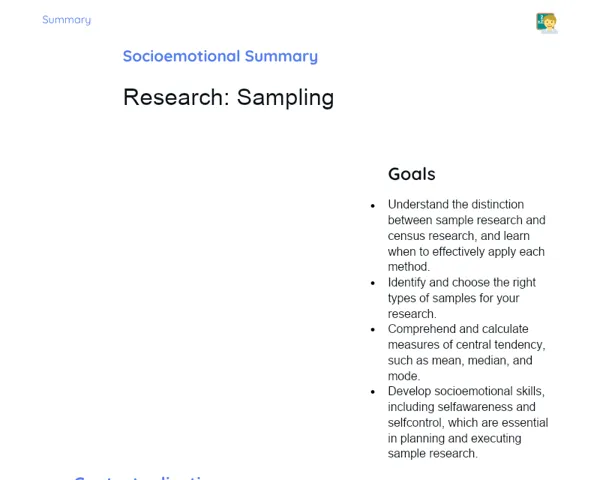Summary Tradisional | Repeating Decimals
Contextualization
A repeating decimal is a decimal number where one or more digits recur endlessly after the decimal point. This idea is central to mathematics and appears in many everyday situations. For instance, when we divide 1 by 3, we get 0.333..., where the digit 3 continues to repeat. This continuous repetition is what defines a repeating decimal—a concept that students need to grasp before moving on to more advanced topics in mathematics.
Repeating decimals are not merely abstract mathematical notions; they also have practical applications in several fields such as computer science and engineering. For example, in electrical engineering, periodic signals play a critical role in circuit analysis. Moreover, the intriguing fact that 0.999... equals 1 underlines the density of rational numbers within the real numbers, enriching students’ understanding of how numbers behave and interrelate.
To Remember!
Definition of Repeating Decimal
A repeating decimal is a number where a set of one or more digits repeats indefinitely after the decimal point. The repeating part, known as the period, is what gives these numbers their characteristic form. For example, in 0.333..., the digit 3 repeats endlessly, making it the period of the decimal. It is important for students to understand this, as such decimals appear in many scenarios, including when dividing integers that result in fractional outcomes.
To recognise a repeating decimal, simply look at the digits beyond the decimal point. If you find a pattern that continues without end, you are looking at a repeating decimal. Common examples include fractions like 1/3, yielding 0.333..., and 2/3, which gives 0.666....
It is equally important to distinguish between repeating and non-repeating decimals. Non-repeating decimals have digits after the decimal that do not follow any repeating cycle, such as the number π (pi), which displays an infinite sequence without a recurring pattern.
-
Repeating decimal: a decimal number with digits that repeat endlessly after the decimal point.
-
Period: the segment of digits that repeats in the decimal.
-
Ability to differentiate between repeating and non-repeating decimals.
Identification of Repeating Decimals
To identify repeating decimals, one should observe the sequence of digits right after the decimal point and detect any recurring patterns. For instance, in 0.727272..., the period is 72, as these two digits keep repeating. It is essential for students to practise this skill so that they can quickly identify repeating decimals in various problems.
Correct identification is the first step towards converting these decimals into fractions. Recognising a repeating sequence allows students to apply tried-and-tested methods to rewrite the decimal as a fraction, thereby simplifying many mathematical problems.
Students can benefit from analysing several examples—ranging from simple patterns to more complex ones—to sharpen their ability to spot these numerical regularities.
-
Observation of the sequence of digits after the decimal point.
-
Recognition of repeating patterns.
-
Understanding that identification is key for converting decimals to fractions.
Conversion of Repeating Decimal to Fraction
Converting a repeating decimal into a fraction is a systematic process that uses algebra. For example, to convert 0.666... into a fraction, we can let x = 0.666..., then multiply both sides by 10 to obtain 10x = 6.666.... Subtracting the original equation from this new one gives 9x = 6, and dividing by 9 results in x = 6/9, which simplifies to 2/3.
This method works for any repeating decimal, no matter the length of the repeating sequence. With a more complex repeating decimal like 0.727272..., you would let y = 0.727272..., multiply both sides by 100 (because of the two-digit period), yielding 100y = 72.727272..., subtract the original equation to get 99y = 72, and finally divide to find y = 72/99; this can be reduced to 8/11.
Getting comfortable with converting repeating decimals to fractions helps students understand the connection between different numerical representations, easing the process of solving various mathematical problems.
-
An algebraic method for converting decimals to fractions.
-
Applicable to decimals with repeating patterns of any length.
-
Helps in understanding the relationship between decimal and fractional representations.
Proof that 0.999... equals 1
The fact that 0.999... is equal to 1 is a fascinating concept that can be demonstrated using basic algebra. Let z = 0.999..., and by multiplying both sides by 10, we get 10z = 9.999.... Subtracting the original equation from this new equation, we arrive at 10z - z = 9.999... - 0.999..., which simplifies to 9z = 9. Dividing through by 9 gives z = 1, thereby proving that 0.999... indeed equals 1.
This demonstration illustrates the dense nature of rational numbers within the real number system, showing that two seemingly different numbers can be identical. This idea forms the basis for more advanced topics such as limits and continuity, which students will tackle later.
Understanding that 0.999... equals 1 also strengthens students’ grasp of decimals and numerical precision, offering a stepping stone to more abstract mathematical concepts.
-
Shows equality through simple algebraic manipulation.
-
Demonstrates the density of rational numbers within the set of real numbers.
-
Sets the stage for understanding more advanced topics like limits and continuity.
Key Terms
-
Repeating Decimal: A decimal number with digits that repeat endlessly after the decimal point.
-
Period: The part of a repeating decimal that repeats.
-
Generating Fraction: A fraction that represents a repeating decimal.
-
Density of Rational Numbers: The property that between any two real numbers, there is always a rational number.
-
Algebraic Manipulation: The use of algebraic techniques to rearrange and solve equations or convert numbers.
Important Conclusions
In this lesson, we covered the definition and identification of repeating decimals, learned how to convert these decimals into fractions, and demonstrated the equality of 0.999... with 1. Grasping these concepts is crucial for progressing to more complex topics in mathematics, such as limits and continuity. It also shows how repeating decimals have practical uses in fields like engineering and computer science, making the lesson both relevant and applicable.
The skill of converting repeating decimals into fractions simplifies many calculations and helps solve mathematical problems more efficiently. Recognising the density of rational numbers among real numbers, as illustrated by the equivalence of 0.999... and 1, further deepens students’ mathematical understanding.
Students are encouraged to keep exploring this topic. Regular practice with converting and identifying repeating decimals will build a strong foundation that supports learning more advanced mathematical ideas in the future.
Study Tips
-
Practice converting various repeating decimals into fractions, starting from simpler examples and gradually tackling more complex ones.
-
Review the algebraic proof showing that 0.999... equals 1 and try explaining it in your own words to ensure complete understanding.
-
Investigate real-life applications of repeating decimals in areas such as computer science and engineering to appreciate the broader relevance of these concepts.



